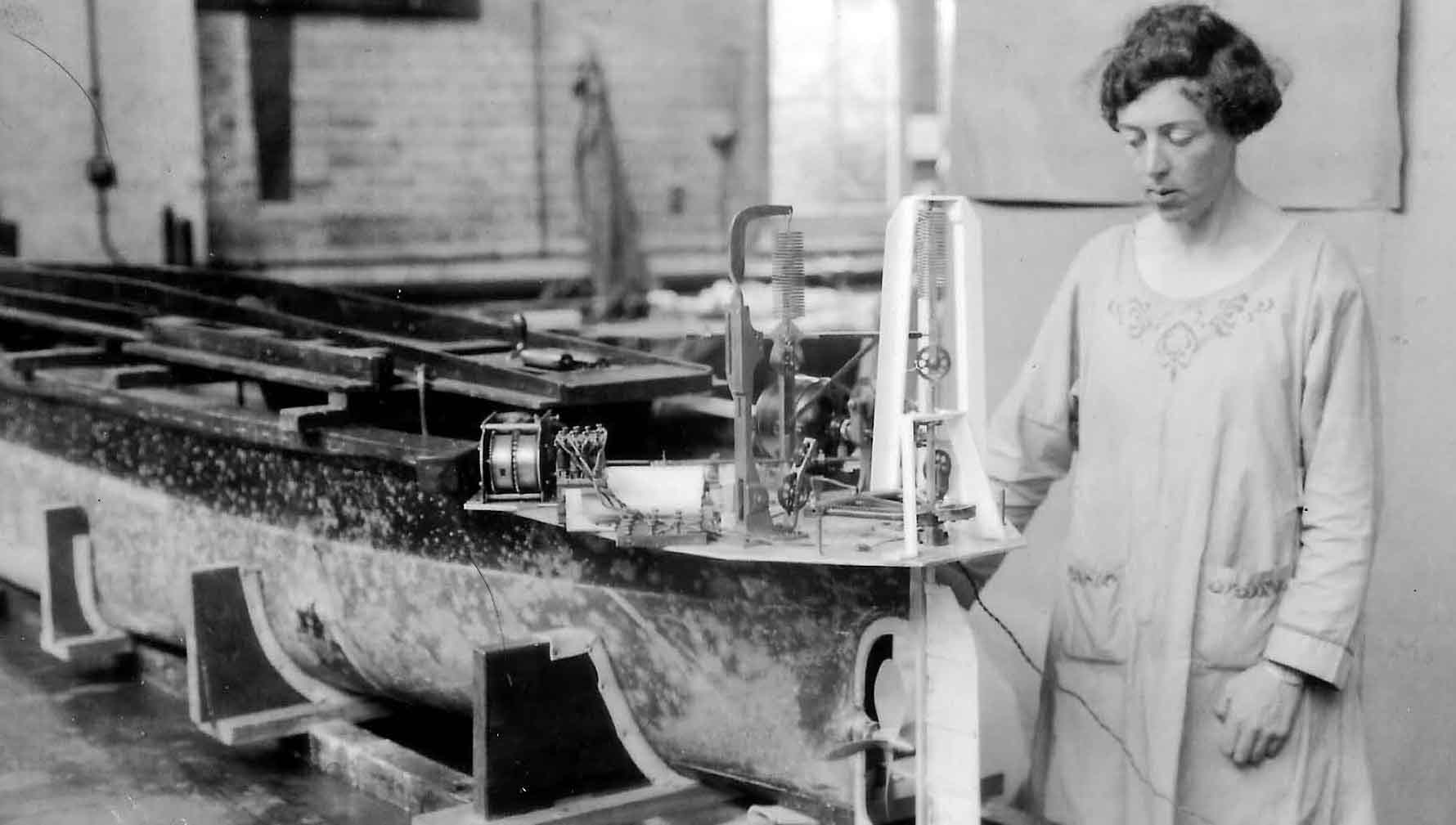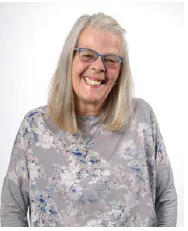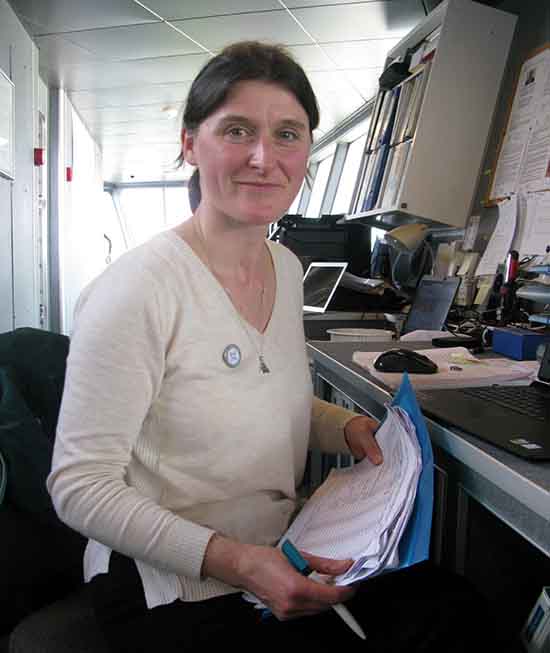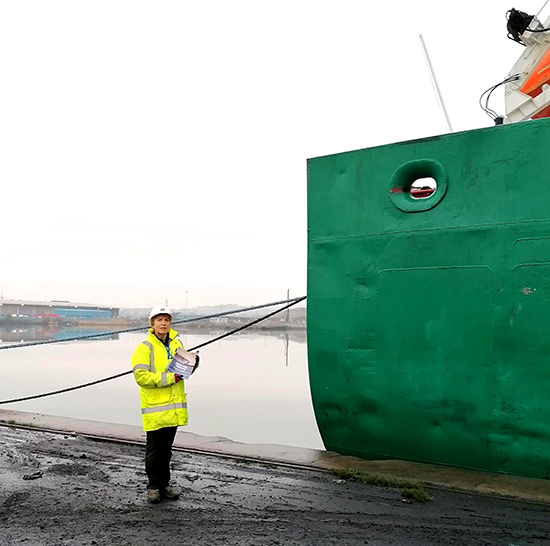- Topics
- Campaigning
- Careers
- Colleges
- Community
- Education and training
- Environment
- Equality
- Federation
- General secretary message
- Government
- Health and safety
- History
- Industrial
- International
- Law
- Members at work
- Nautilus news
- Nautilus partnerships
- Netherlands
- Open days
- Opinion
- Organising
- Podcasts from Nautilus
- Sponsored content
- Switzerland
- Technology
- Ukraine
- United Kingdom
- Welfare
Another world of maritime women – meeting the female naval architects of RINA
19 February 2020

While talented women have been making waves in seagoing jobs, there’s a shore-based maritime sector where female professionals have been contributing their skills and expertise for a surprisingly long time. Dr Jo Stanley looks at a new book celebrating a century of women in naval architecture
You may not have stopped to think that the ship you are working on could have been designed by a woman, unless she happened to be there during your sea trials. And does the designer's gender matter anyway? The point is surely just that your vessel does its job?
But if some of the finest potential naval architects are put off from entering the profession because their gender makes them unwelcome, then we all lose out, and that's why it matters.
I've researched female marine engineers of the 1970s. And the parallels with the naval architecture world are striking. In both cases determined women with STEM skills (science, technology, engineering and mathematics) made their way into a male-dominated profession.
Safety gear produced in sizes that didn't recognise women's dimensions was a telling problem. So was the absence of toilets women could use. Bigger issues were discriminatory behaviour by colleagues, colleges and employers.
Yet both female engineers and female naval architects have been working in the industry for longer than you might think. The Royal Institution of Naval Architects (RINA) recently produced a special history called Women in the Institution 1919-2019 to mark the centenary of the meeting when it was agreed that female professionals could be admitted as members.
Available free online, the book is an anthology of 41 brief biographies of female RINA members, dating back to the time before the Institution became 'Royal' and was simply known as INA. Fascinating stories of skill and determination make these pages a rich history of the industry that deserves a wider audience.
The early days
In the 1890s, women with STEM skills were beginning to work in the naval architecture profession, but being admitted to the INA 'club' was a step too far at this time.
In 1910, Rachael Parsons, who came from a well-known engineering family, was one of the first women to study for a degree in mechanical sciences, along with Eily Keary in 1912.
After the Sex Disqualification (Removal) Act of 1919 was passed, INA was required to admit women. Eily Keary, Rachael Parsons and Blanche Thornycroft – who was also from a prestigious engineering family – were the first women to be elected as Associates of the Institution. Keary became the first woman to be appointed Associate Member in 1923; and RINA's first female full Member in 1973. She was also the first married woman and first mother to join the Institution.
Gradual progress
There's a general gap in knowledge of women in the industry from the late 1920s. But absence of evidence is not evidence of absence. Susan Denham-Christie designed ships in the 1930s and 40s for the yard that was later Swan Hunter.
In the 1950s, more women began taking relevant degrees and joining RINA. And although they were not really high-profile enough to act as role models, the name of one – Marion Scatcherd – was at least vaguely familiar to Jane Westmore when she started out in 1973. The first woman on the RINA Council was P.A.M. Fleetwood in 1978.
Throughout the 20th century, women in authority could readily be disliked as 'bossy ladies'. Women in male-dominated industries felt they had to calibrate their behaviours, as well as develop a thick skin and be very determined.
Catherine Ingram said she had found 'social challenges of being "the odd one out" that can lead to conflict over where you "belong" and a feeling that colleagues just don't understand how the work environment seems to you'.
She faced 'the assumption that you would never want to go for a beer, and that you are the office secretary' and the idea that no matter how senior the woman is, she will not only minute the meeting but sort the lunch.
Elena Nye said: 'Sure, most of these men do not consciously mean harm; however, their behaviour is often undermining and can make a difficult job more challenging with another dimension to manage.'
Ros Downs in the 1980s decided 'it was best to ignore it and get on, rather than pull men up on it'. And when a crew member told Michelle Jeffery on sea trials that a ship was no place for a woman, she 'calmly responded … by stating that my gender made no difference to my ability to do my job. I was just as qualified and capable as my male colleagues.'
But even as late as the 1990s, Maria Gabaraini found that 'someone always emphasised I was a nice engineer rather than a fine naval architect'.
Now and in the future
It's getting better. Campaigners everywhere use the maxim: 'You need to see it to be it'. They point out that positive role models can help marginalised people access what were once unthinkable careers. RINA member Gillian Gray, a STEM ambassador, agrees that models and mentors help.
Relative newcomer Victoria Conway is one of the 26 women working on Type 26 Global Combat support for BAE Systems today. Victoria attributes her success 'to having such a strong female lead within the team, who constantly challenges my abilities [and] pushes me to flourish'. The strong female lead she is referring to is fellow RINA member Jane Westmore, so it looks like the idea of models and mentors is starting to make a real difference.
Catherine Ingram knows the industry well and is 'excited to see changes in corporate culture as we move away from simply striving for equality in pay etc. to fostering an environment where there is true equity for all. I have been told on several occasions in my career that gender is not an issue. My hope is that in another 100 years this will be unequivocally true and that the initiatives required today will seem ridiculous.'
Women in the Institution
Jane Westmore
Today a naval architect with BAE Systems, Jane Westmore began an apprenticeship as ship's draughtsman in the 1970s – the decade when equalities legislation began levelling the playing field. Jane was helped by her abilities, her confidence, her Royal Navy dad's belief in her, and a great mentor.

And she found that older men's protectiveness sometimes meant that being a young female newcomer was an asset.
'During my apprenticeship at Vickers Shipbuilding and Engineering in Barrow, I did six months on the shop floor ... One foreman got his wife to crochet me a woollen hat because I got an awful headache the day we lowered the floating dock. Another tried to keep my health up with fruit.
'I got to participate and do things far more on the shop floor than the boys did; the lads generally were just told to make the teas!' But also 'I worked really hard. I made sure I was the best and got the highest marks.'
Later in the 1970s, Jane got a summer job working for Vosper Thornycroft. It was 50 years after Blanche Thornycroft had been working in the family firm. And no, Blanche wasn't a role model for girls like Jane; she wasn't even mentioned.
Employers often worried that women would go off and have babies. Jane's long career was helped by a male colleague from Scott Lithgow who 'put in a good word for me. That, I think, overcame a little doubt about employing a woman.'
Gillian Gray
Gillian Gray grew up sailing and began her career in 1996. One of two women undergraduates in a class of 35 at Strathclyde University, she remembers: 'It was a standard joke that we would be painting all the boats pink.

'I am now contemplating marketing my designs with paintwork in, you guessed it, pink. This is because I see my minority gender as a benefit, not a hindrance.'
Early on, she says, 'I felt the need to act laddish. But now I am confident enough in myself and my abilities to present myself more honestly.'
Tucked away in rural North Devon, Gillian, a freelancer, benefits from the RINA web directory which helps clients find her.
One client chose her because he thought she must be good to have stuck at it despite the difficulties he perceived that a woman would have in the industry.
Ros Downs
In the 1980s, when naval architect Ros Downs was working as a production manager at what is now BAE Systems, she was told it was probably the first time since the Second World War that a female had shown an interest in taking up a management post in this environment.

However, women who'd worked on armaments there in the war were still valued, and there is a blue plaque on the building.
Later, her company asked her to lead a team looking into how to include more women. The team suggested enabling part-time working, job sharing and flexible working – 'some of which were initiated,' Ros says wryly.
Ros went on to a successful career in project management, and has been on key RINA committees since the 1980s, usually as the only woman.
Now retired, she still does professional review interviews for entry into full membership and chartered engineer status, and she often goes onboard ships as a welfare visitor for the Mission to Seafarers.
Women in the Institution 1919-2019 is available free of charge at:
- Women in the Institution 1919-2019 (PDF document)
- Women in the Institution 1919-2019 (eLibrary
Tags
